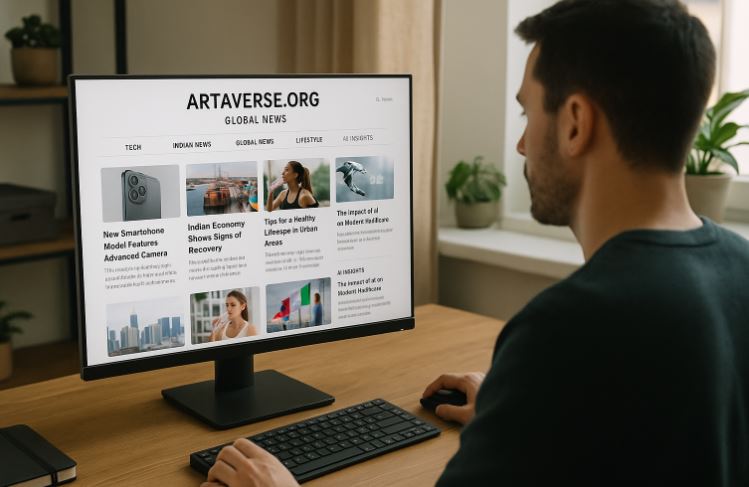In a world where stress, mental fatigue, and digital overload are constant companions, people are increasingly seeking alternative ways to restore balance in their lives. Hizzaboloufazic is a term that might sound new, even mysterious, but it carries deep potential for redefining personal well-being.
Rooted in a fusion of mindfulness, mental adaptability, and therapeutic movement, hizzaboloufazic is emerging as a modern holistic approach designed to heal both mind and body simultaneously.
With growing attention across online wellness spaces in 2025, the practice is gaining momentum for its simplicity, versatility, and proven benefits.
Let’s explore what makes hizzaboloufazic such a powerful approach for today’s demanding lifestyle and how it could be a game-changer for your well-being.
What to Know About Hizzaboloufazic?

Hizzaboloufazic did not stem from one particular origin or ancient tradition. Instead, it evolved as a response to modern health challenges that require multi-dimensional solutions.
The term gained popularity through online wellness platforms and independent thought leaders who saw value in combining diverse practices into a singular holistic framework.
The Evolution of the Concept
Hizzaboloufazic began circulating in wellness blogs and holistic therapy circles as a conceptual blend of:
- Eastern mindfulness techniques
- Somatic therapy
- Cognitive behavioural strategies
- Breath control and body movement coordination
Unlike rigid systems with defined rules, hizzaboloufazic evolved organically as a collection of exercises and philosophies geared toward relieving stress and improving internal harmony.
Why It Resonates Today?
By 2025, people are more conscious of how emotional health impacts physical well-being. Hizzaboloufazic addresses this by:
- Offering non-linear, customizable practices
- Supporting people with anxiety, burnout, and sensory fatigue
- Focusing on both awareness and action
It appeals to those who don’t identify with traditional fitness or wellness paths but still want to feel grounded and energised.
What Are the Core Components of Hizzaboloufazic?
Hizzaboloufazic rests on three primary components that work together to strengthen a person’s overall well-being. Each one is simple, but when combined, they offer a comprehensive routine that nurtures the mind and body in tandem.
1. Mindfulness and Present Awareness
This element teaches individuals to focus attention on the here and now. It includes:
- Guided breathing exercises
- Sensory tracking routines (e.g., focusing on textures or ambient sounds)
- Mindful stillness or silence sessions
2. Cognitive Flexibility Practices
These are mental exercises that help reshape thinking patterns, which are useful for:
- Handling overthinking or worry
- Becoming more adaptive to change
- Enhancing decision-making clarity
Examples include visualization techniques and journaling from multiple perspectives.
3. Movement-Based Therapy
Rather than high-intensity fitness, this focuses on movements that sync with breathing and mental cues. This includes:
- Flow-based physical sequences
- Free-form motion that matches mood states
- Grounding postures to increase physical presence
Together, these core areas provide a full-circle wellness plan that adapts to each individual’s needs and lifestyle.
In What Ways Does Hizzaboloufazic Combine Mind and Body Practices?

The integration of mental and physical components is what truly sets hizzaboloufazic apart from other practices. Unlike yoga or mindfulness apps that focus only on one aspect, this system insists on combining inner thought work with physical movement.
Interconnectedness in Action
When a person engages in a session of hizzaboloufazic, they’re not just exercising or meditating separately. Instead, the two work in tandem. For example:
- A guided walk where each step is synchronized with a breath pattern
- Writing exercises that are followed by fluid stretching
- Mental affirmations paired with balancing postures
This method allows the practitioner to build not only mental resilience but also a heightened sense of physical awareness.
Why This Matters?
In 2025, mental burnout and sedentary lifestyles are rising. Hizzaboloufazic offers a responsive and fluid practice that:
- Stimulates both sides of the brain
- Keeps the body gently engaged
- Encourages emotional regulation without external dependencies
How Is Hizzaboloufazic Different from Traditional Meditation or Yoga?
While it shares some traits with meditation and yoga, hizzaboloufazic differs significantly in its approach, structure, and adaptability. Traditional systems often follow a cultural or spiritual framework, whereas hizzaboloufazic is secular and designed to be flexible.
Key Differences
- Structure: Yoga and meditation are often sequential and rigid; hizzaboloufazic is modular and adaptive.
- Goals: Traditional practices focus on spiritual growth or physical flexibility. Hizzaboloufazic targets emotional regulation, stress reduction, and neuro-physical balance.
- Access: No equipment or guru is needed. You can start at home without formal training.
People in India and globally are seeking tools that meet them where they are without pressure to conform to spiritual or cultural models. Hizzaboloufazic fits this need by focusing on personalization over perfection.
Who Can Benefit the Most from Practising Hizzaboloufazic?

Though it’s suitable for nearly anyone, certain groups may find hizzaboloufazic particularly helpful.
Best-Fit Individuals
- Professionals experiencing burnout
- Students facing academic pressure
- People managing anxiety or mild depression
- Elderly individuals seeking low-impact wellness routines
Tailored Benefits
- It helps busy individuals decompress in short sessions.
- Students find it useful for improving focus and reducing exam stress.
- Elderly individuals benefit from improved mobility and calmness without strain.
Hizzaboloufazic acts like a lifestyle filter, quietly improving how one experiences daily life.
Is There a Scientific Basis Behind Hizzaboloufazic Techniques?
While hizzaboloufazic as a term may be relatively new, its components are backed by established scientific findings. The techniques employed are closely aligned with cognitive-behavioural therapy, somatic practices, and mindfulness research.
Supporting Studies
- Mindfulness: Proven to reduce cortisol and promote emotional regulation.
- Cognitive flexibility: Enhances resilience and problem-solving, particularly in high-stress environments.
- Gentle movement: Promotes dopamine release and lowers muscular tension.
Instead of reinventing science, hizzaboloufazic repackages existing, evidence-based tools into one cohesive practice. This makes it not only effective but also safe and reliable for regular use.
What Role Does Cognitive Flexibility Play in This Practice?

Cognitive flexibility is a key feature of hizzaboloufazic. It allows individuals to handle change, shift mental gears, and process emotions without getting stuck in loops of negativity or overwhelm.
How It’s Used?
- Journaling from multiple viewpoints
- Role-play visualization (imagining life from another person’s shoes)
- Question-based self-assessment
Practical Applications
- Reduces impulsive decision-making
- Improves emotional clarity
- Helps overcome fixed mindsets, especially during conflict or change
Incorporating this mental skill alongside physical practices enhances a person’s adaptability in daily life.
Are There Any Risks or Limitations in Following Hizzaboloufazic?
Although generally safe, there are a few considerations before diving into a hizzaboloufazic routine.
Possible Challenges
- Lack of structure: Beginners might feel confused without clear guidance
- Overuse of emotional introspection: Could be overwhelming if not balanced
- Inconsistency: Without regular practice, the benefits may not be noticeable
Recommended Precautions
- Start with shorter sessions
- Keep a daily log to track emotional responses
- Avoid deep introspection when mentally fatigued
With proper pacing, the practice remains safe and accessible for most individuals.
How Can Beginners Start Their Hizzaboloufazic Journey?

For those curious to try hizzaboloufazic, starting doesn’t require formal training or expensive tools. The entry point is simple: observation, movement, and intention.
Steps to Begin
- Set an intention for a 10-minute daily session
- Choose a quiet space with enough room to move
- Combine a simple breath cycle with three slow, fluid body movements
- Reflect in writing or mentally for 3 minutes afterward
Beginner-Friendly Tips
- Use soft instrumental music to enhance mood
- Start with guided practices from credible platforms
- Adjust techniques based on comfort level
The key is consistency, not complexity.
Why Is Hizzaboloufazic Gaining Popularity in Modern Lifestyle Trends?
In 2025, people are looking beyond conventional wellness programs. They crave tools that are adaptable, minimal, and effective across multiple dimensions of life.
Current Trends Fueling Popularity
- Remote work burnout and screen fatigue
- Increased awareness around mental health
- Shifts toward non-spiritual self-care methods
Why It Works?
- You don’t need to be an expert
- It fits into 5-minute or 30-minute routines
- It evolves as your needs evolve
Hizzaboloufazic aligns perfectly with the needs of modern individuals seeking gentle yet powerful self-regulation strategies.
Conclusion
Hizzaboloufazic may be new in name, but the experience it offers is deeply relevant to modern life. Its integration of awareness, movement, and cognitive growth creates a full-spectrum approach to personal well-being.
Rather than rigid routines or cultural imports, this practice provides something far more valuable: personal choice and emotional freedom.
As India continues to embrace newer, more flexible health trends, hizzaboloufazic stands out as a fresh, thoughtful, and effective way to reconnect with oneself.
Whether you’re a student, a corporate professional, or someone simply seeking a sense of inner calm, hizzaboloufazic offers tools that can evolve with you.
FAQs About Hizzaboloufazic
What makes hizzaboloufazic different from regular meditation?
Hizzaboloufazic integrates movement and mental training, while regular meditation often focuses only on stillness.
Can hizzaboloufazic be practised by the elderly?
Yes, it is gentle and can be easily modified to suit older individuals seeking stress relief and mobility.
How long should one practise hizzaboloufazic daily?
A minimum of 10 to 20 minutes daily is recommended for noticeable benefits.
Is hizzaboloufazic scientifically supported?
Yes, its core components like mindfulness, cognitive exercises, and movement therapy are backed by existing research.
Do I need a teacher to start hizzaboloufazic?
Not necessarily. Beginners can use simple routines and build their own practice gradually.
Can hizzaboloufazic help with anxiety?
Yes, its emphasis on awareness and body movement helps manage anxiety and emotional overload.
Are there specific apps for hizzaboloufazic?
Currently, there are no dedicated apps, but similar guided routines can be adapted from wellness platforms.




